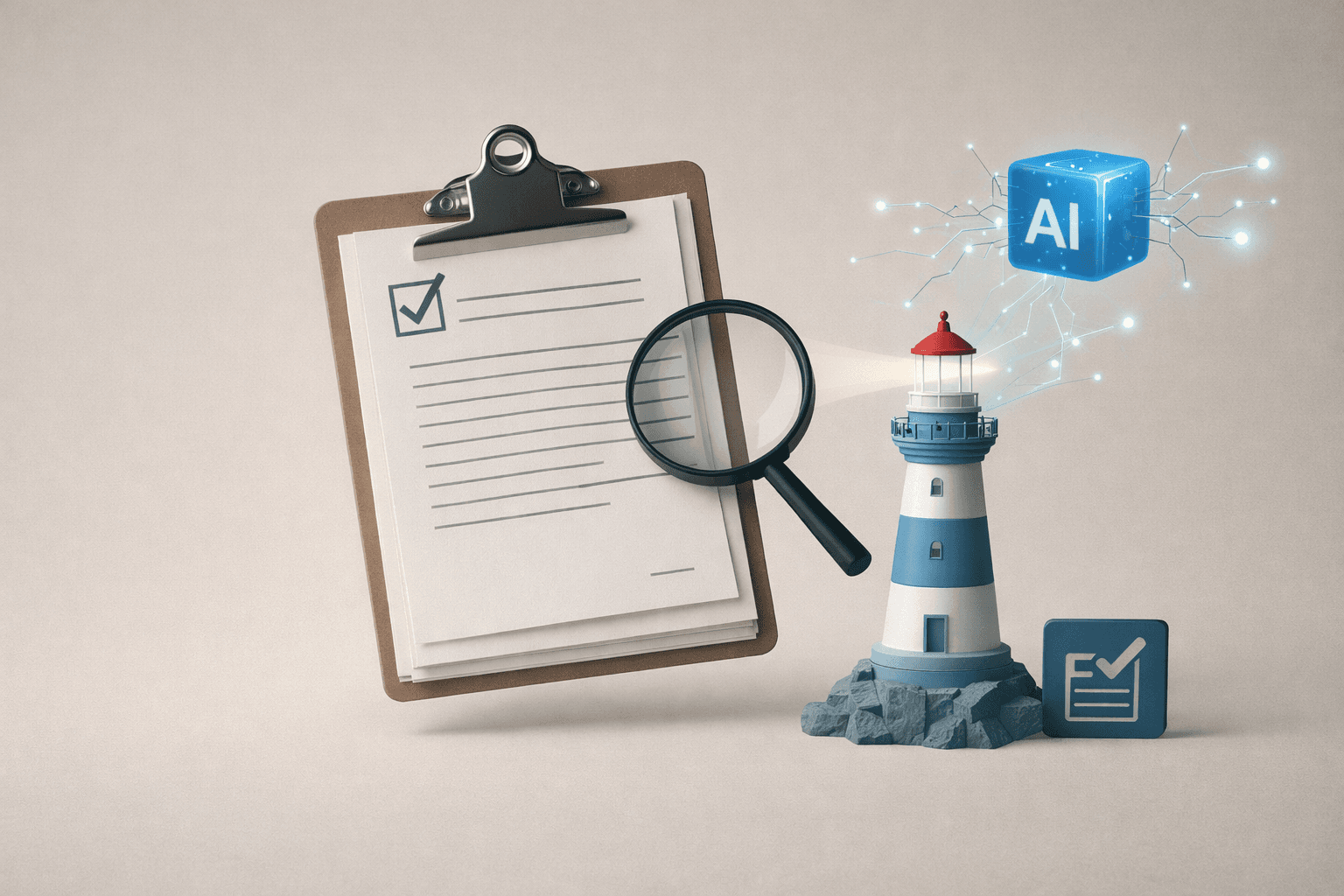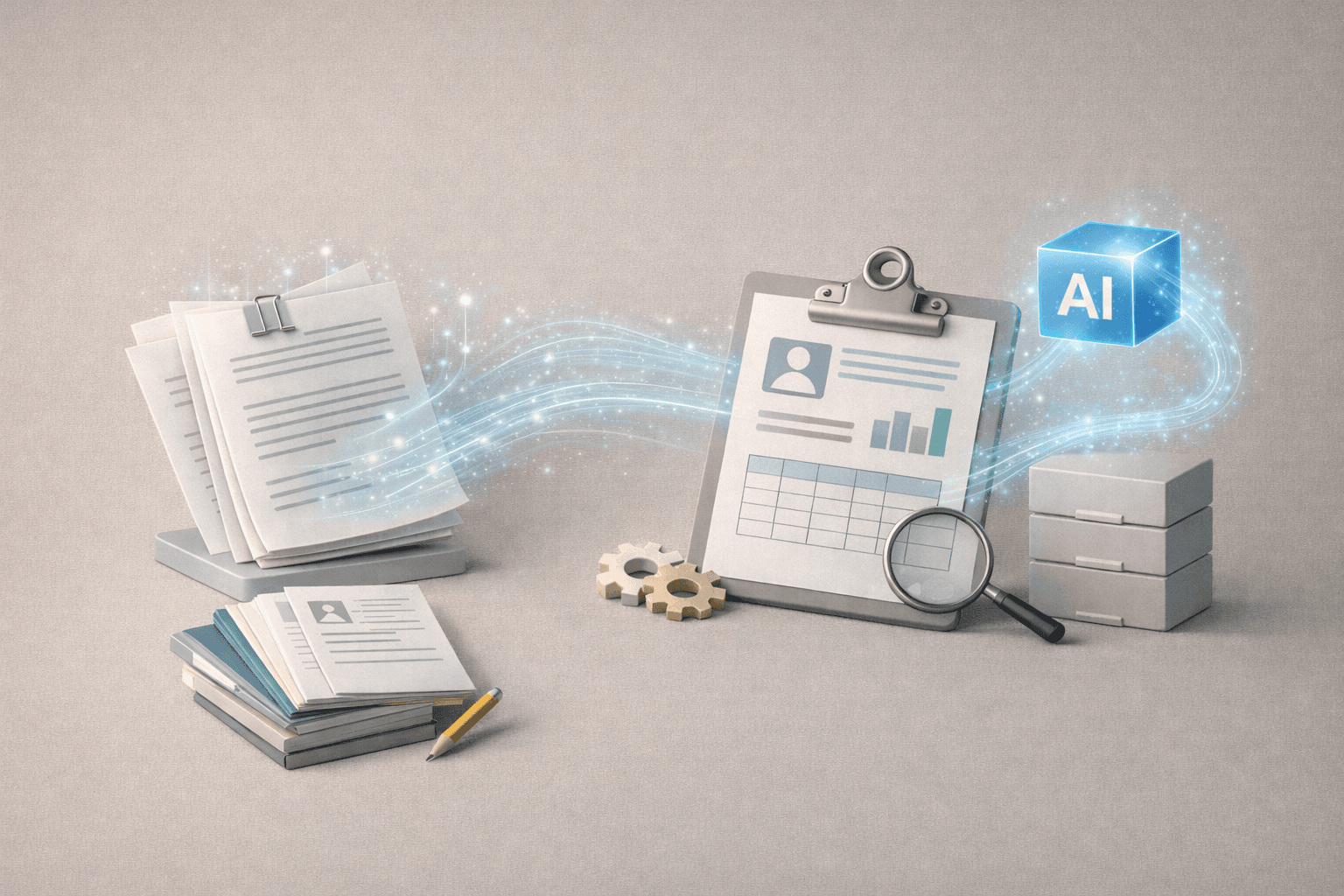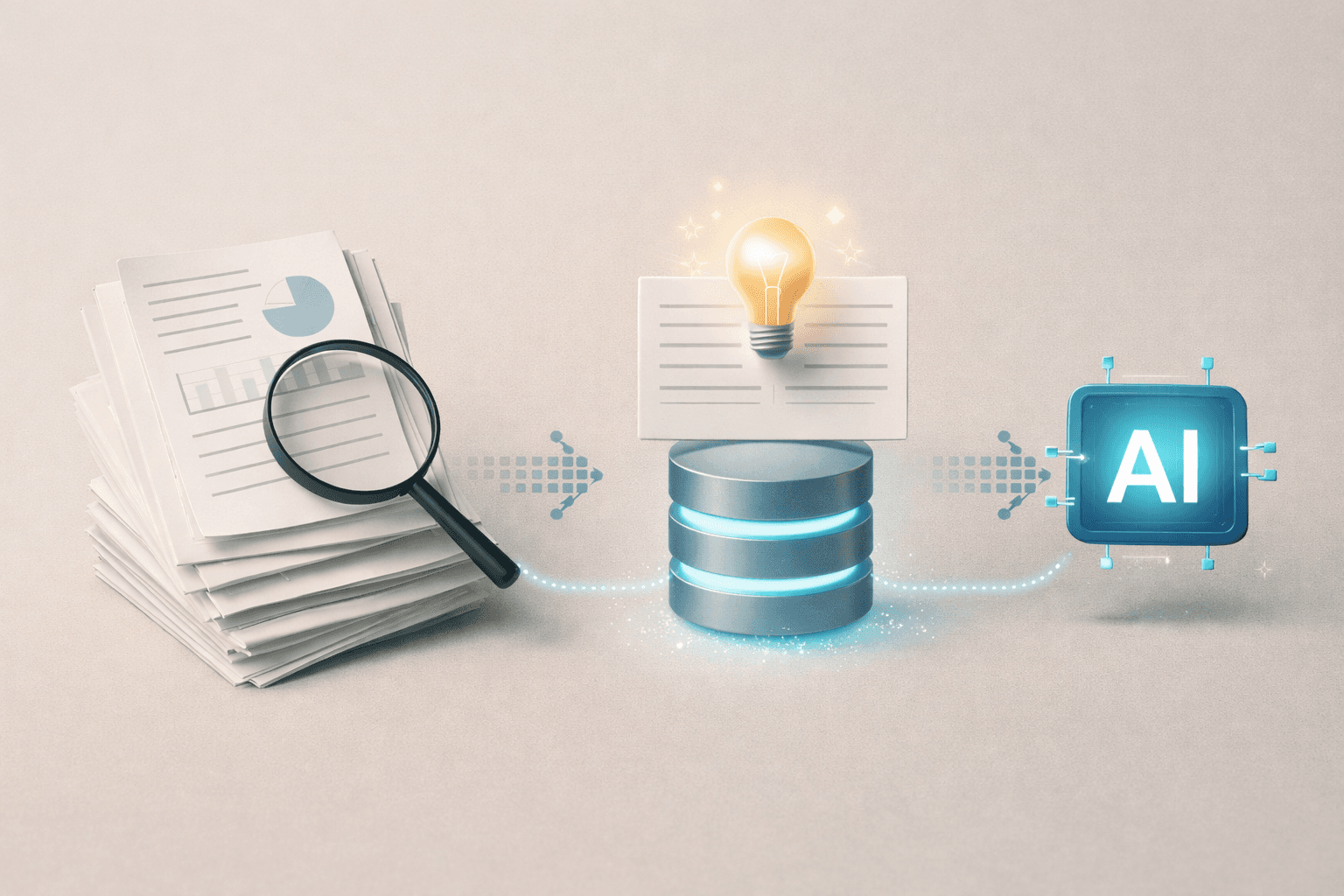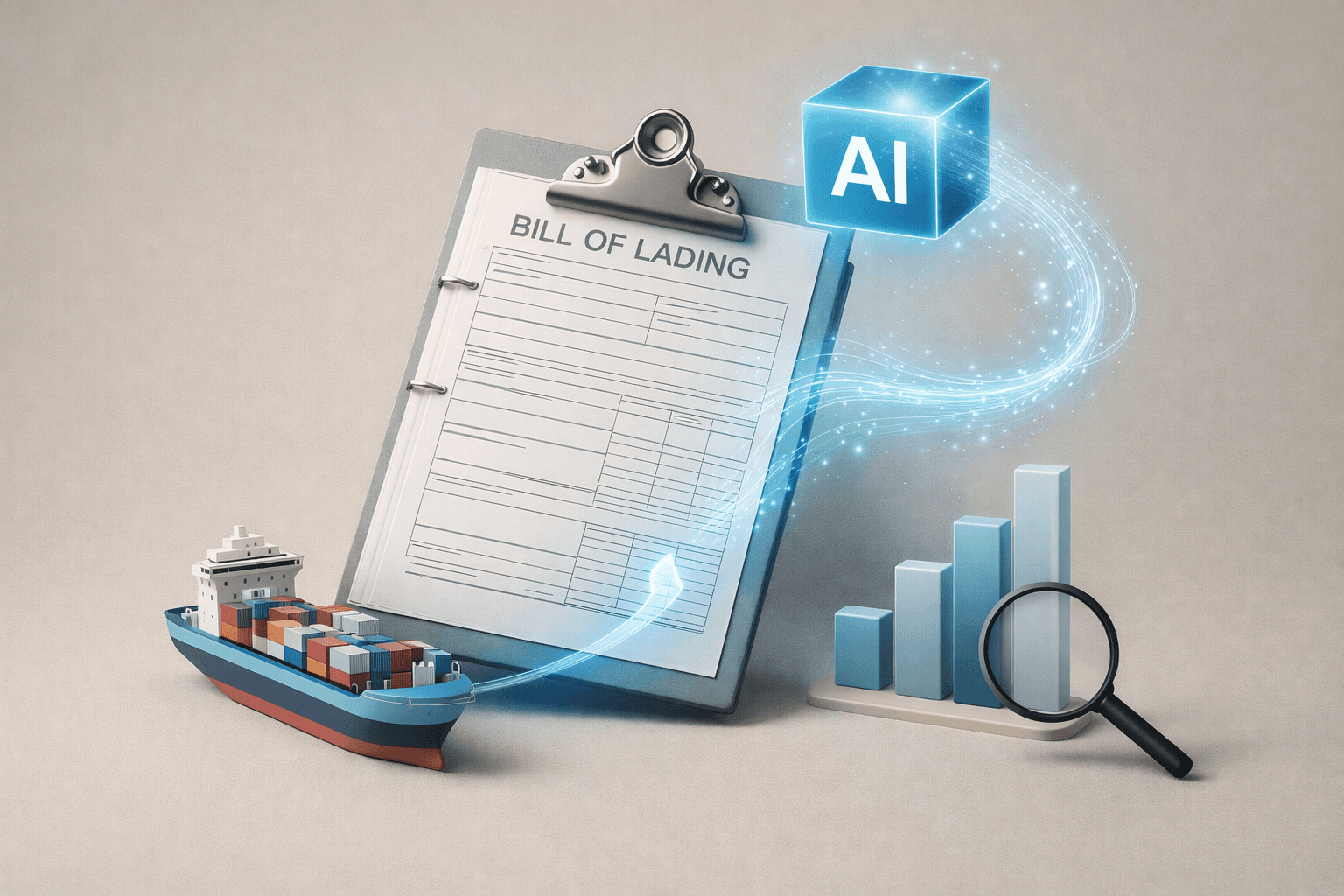Insight
What is Document-Based AI: Definition, Key Technologies, and Enterprise Applications
Sep 17, 2025
Definition of Document-Based AI (Document AI)
Technology that automatically understands and structures unstructured documents
Document-Based AI refers to AI systems designed to process, interpret, and structure unstructured documents such as scanned PDFs, handwritten forms, or image-based documents. Unlike traditional rule-based document processing, Document AI utilizes machine learning and deep learning techniques to extract meaning and context from various file types, regardless of their layout complexity or format diversity.
Relationship with IDP (Intelligent Document Processing)
While the terms are often used interchangeably, IDP refers to a broader category of intelligent automation tools that include OCR, NLP, and process automation. Document AI is the core engine behind most IDP systems, focusing specifically on content understanding, entity recognition, and semantic structuring of text data.
Evolution of Document Processing with OCR + NLP + Reasoning
Traditional OCR converts images to text, but modern Document AI goes further by applying NLP and reasoning models. These models not only extract entities (names, dates, terms) but also infer relationships and meaning between them. This makes it possible to automate tasks that used to require legal, financial, or medical expertise.
Core Technology Components
Document Preprocessing and OCR (including images and scanned files)
AI-ready preprocessing includes denoising, language detection, and layout correction. OCR converts visual elements into machine-readable text, supporting multilingual and domain-specific formats.
Document Layout Analysis and Visual Structure Understanding
Visual segmentation is critical to understanding complex document layouts like tables, forms, and footnotes. Using transformer-based models, Document AI reconstructs a logical reading order and separates semantic zones.
NLP-based Information Extraction and Classification
Entities such as amounts, clauses, or patient IDs are extracted using named entity recognition (NER) and relation extraction. Text classification models assign categories (e.g., invoice, contract, lab report) to streamline workflow routing.
Model Training and Feedback Loops for Quality Improvement
Continuous improvement is achieved by incorporating user corrections, validation feedback, and active learning mechanisms. Fine-tuning pre-trained models with in-domain data boosts accuracy.
Data Cleaning and Workflow Automation Integration
Processed data can be connected directly to downstream systems such as ERP, CRM, or case management tools, enabling complete workflow automation.
Real-World Use Cases for Document-Based AI
Legal Teams: Automatic clause extraction and version comparison of contracts
Document AI assists legal professionals by identifying critical clauses, comparing past versions, and flagging risks in bulk document reviews.
Finance/Accounting: Automated classification of tax forms and invoices
Routine document input and validation tasks are accelerated using intelligent parsing, reducing human error in expense reports, tax filings, and audit preparation.
Healthcare Institutions: Structuring unstructured clinical notes and records
Clinical documentation such as discharge summaries or radiology reports can be transformed into searchable, structured formats for research and compliance.
Customer Service: Auto-summarization and routing of support documentation
Email queries, manuals, and chat logs are summarized to generate quick replies or routed to the appropriate service team, improving first-response efficiency.
Research Organizations: Automatic summarization and structuring of academic papers
Document AI helps researchers extract topic-based summaries and citation mappings across vast academic archives.
Adoption Benefits: Time, Cost, and Accuracy Gains
10x Faster Document Handling than Manual Workflows
Document AI minimizes bottlenecks in document-heavy workflows, improving processing times and freeing up teams for higher-value tasks.
Reduced Human Error Through AI Reasoning
Context-aware models reduce misinterpretation and ensure higher data fidelity, especially in compliance-critical industries.
End-to-End Automation for Each Stage of the Document Lifecycle
From intake to archival, Document AI enables continuous automation, increasing overall productivity and auditability.
Key Considerations Before Adoption
Accuracy Challenges from Document Format Diversity
Highly variable layouts (e.g., tables in medical forms, handwritten annotations) can affect recognition quality. Custom preprocessing and model fine-tuning are essential.
Data Privacy and Regulatory Compliance
For enterprises handling sensitive data, the AI system must adhere to standards such as GDPR, HIPAA, or local financial regulations. Role-based access and encrypted logging are must-haves.
On-Premise vs Cloud: Infrastructure Decisions
On-premise deployments offer full control over data, while cloud systems ensure scalability. The choice depends on compliance requirements and IT readiness.
Long-Term Model Maintenance and Learning Pipelines
Adoption requires a strategy for model updates, retraining, and drift monitoring. Governance frameworks should be in place for sustainable operations.
How Wissly Implements Document-Based AI
Automatic Recognition of Various Formats (HWP, PDF, Scanned Images)
Wissly’s engine supports Korean-specific formats (like HWP), scanned files, and image-based PDFs, ensuring accurate parsing regardless of origin.
GPT-Powered Q&A with Highlighting and Source Tracing
Users can query the system using natural language, with AI-generated answers linked directly to source documents and visual highlights to support transparency.
Local Installation for Privacy and Compliance
Wissly is designed for secure, on-premise deployment—ideal for institutions in legal, financial, or healthcare domains that require complete data sovereignty.
Real-Time Indexing and Answer Optimization via User Logs
Every document change triggers automatic re-indexing, and usage data helps tune future results—creating a self-improving AI search ecosystem.
Conclusion: From Documents to Data, From Data to Insight
Transform Documents from Static Files to Actionable Intelligence
Document AI enables organizations to elevate their document workflows into knowledge-driven engines—where every document adds value.
Start Your Document Intelligence Journey with Wissly
From regulatory compliance to operational efficiency, Wissly empowers organizations to harness the full potential of their internal knowledge through secure and intelligent document automation.
Recommended Content










